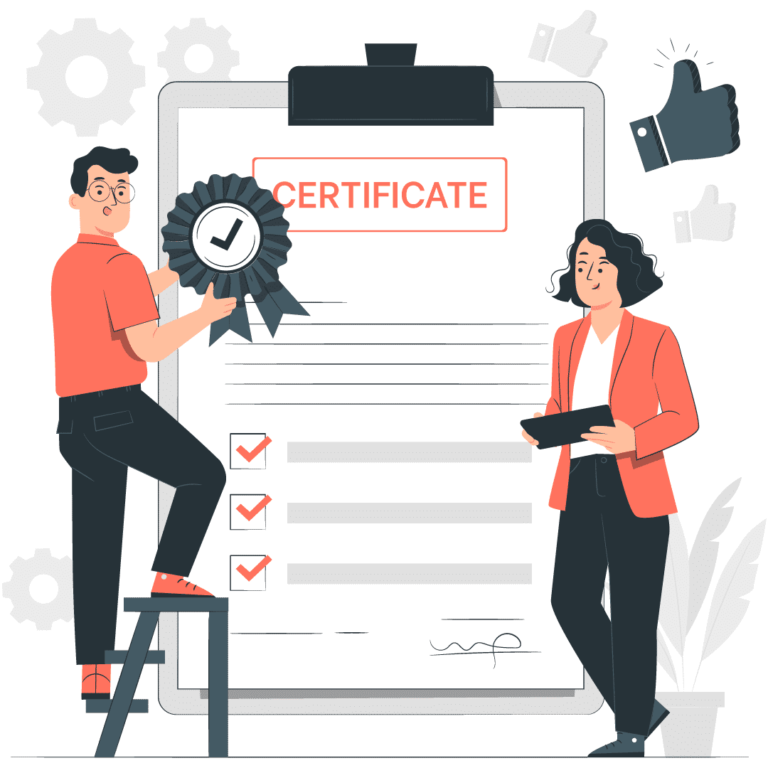Are you planning for a job in IT?
Do you want that your job should be well paid?
So, you selected to be a scrum master?
Then this article is what you are missing for your scrum master interview
Scrum master is a highly demanding profession in 2024. Professionals are unable to fulfil the demands of the corporates. A survey shows that more than 5% of the employees in big corporates are scrum masters because managing becomes a bigger factor when we deal professionally. Thinkcloudly is here with the most important interview questions for scrum master in 2024 so that you can perform in your interview and seats on a well-paying desk job.
Q1. What is Scrum?
Answer: Scrum is a lightweight framework for an agile method of development. It works on the philosophy of delivering the product in the tasks called sprint followed by reviews adaptions. The reviews and adaptions after every sprint make it the most relevant framework.
Q2. What is the philosophy of Scrum?
Answer: The philosophy of Scrum works based on many basic points:
- It states that a project should be divided into smaller sprints.
- We should track the progress of each sprint and combine the project with 4 artifacts: product backlog, sprint backlog, burndown graph, and product increments.
- The framework should be divided into 3 core roles scrum master, product owner, and the development team.
- Each sprint goes through 4 phases sprint planning, spring processing, sprint review, and sprint retrospective.
Q3. What are the specialties of Scrum?
Answer: Being certainly different from the traditional method of development, Scrum holds many specialties like teamwork, continuous functional product delivery, reviews, and adaptions:
- Development in sprints: The final product is developed in sprints. That means the team divides the job of reaching the final product into various sub-jobs as sprints, and at a time, a sprint is completed regardless of the final product.
- Team Work: No single individual is working alone. The people work as a team to reach a goal by completing their tasks as discussed in daily Scrum.
- Continuous functional product delivery: Since the whole work goes on in sprints, some results are continuously delivered for review and analysis instead of waiting for the entire development cycle to get completed to get a final product.
- Reviews and Adaption: Since we get small results or sub-products with the completion of the sprint, we can get reviews over them and adapt the iterations. Hence, the Scrum framework follows the review and adaption model.
Q4. What are the core roles in the Scrum framework?
Answer: The development of any product needs many heads counts for proper execution and successful completion, but at the higher end Scrum framework divides it into 3 core roles:
- Product Owner: As the name states, the owner owns the product and its budget. The product owner examines the alignment of the workflow in the team, whether anyone in the group does it, and manages the business and the market. He can take ideas from whole teams, but he is a single person responsible for every significant decision taken.
- Scrum Master: Scrum Master is a kind of facilitator for the development team. The Scrum Master is responsible for demonstrating work and theories of the Scrum to the teammates, managing meetings, and rolling back the hurdles to the team in the way of development.
- Development Team: The team of specific individuals working together to deliver the final product. They have the authority to divide the work and complete each sprint on time.
Boost your earning potential with Scrum expertise. Explore our certified Scrum courses for a high-paying career
- Explore scrum master online training
Q5. Define the artifacts in the Scrum.
Answer: Scrum Artifacts are a kind of documentation that includes product backlog, sprint backlog, burndown graph, and product increments used to track the product development progress.
- Product backlog: It is documentation that includes the remaining work to reach the final product. The product owner uses it to track the product’s progress and the development team’s efficiency.
- Sprint backlog: It is a sub-document of the product backlog that contains the details and backlogs in a sprint or simply the remaining tasks to be completed. It is used to track the healthy flow of sprints.
- Burndown graph: It is a graphical representation of the remaining tasks to reach the final product and can be used to track the progress of the development of the product in one view.
- Product increments: The sum of total works completed in a sprint and the results in the previous sprints. It can be too used as a product progress trackable tool.
Q6. Who is a Scrum master?
Answer: A scrum master is a project manager or facilitator who governs and flows the philosophy of Scrum in the team. The master is responsible for planning a sprint with the product owner, proper sprint processing, scrum meetings, and reporting to the product owner with the backlogs and achievements of the team.

Q7. Explain the work that goes into a sprint.
Answer: The framework completes in four phases:
- Sprint Planning: In this phase, the product owner discusses the working model for developing a product with the team and plans how the work will be divided into different sprints. The documentation of the sprint backlog follows in this phase.
- Sprint Processing: In this phase, the scrum master analyses the team’s work. There is a daily scrum call in the team where the scrum master verifies the work done by all the team members in the last 24 hours and plans for the upcoming 24 hours. Generally, it is assumed to finish a daily scrum in 15 minutes.
- Sprint Review: This is the phase where the team members put up the work done through them, the amount of sprint completion is calculated on that basis, and replanning is made to meet the deadline.
- Sprint Retrospective: This is the checklist updation phase where the team signs over the completed tasks in the sprint and add-ons any leftovers in the upcoming sprint.
From the writer’s desk:
I have mentioned the 7 most asked questions in the Scrum interview. These questions cover nearly all the basic concepts, which makes this article a one-night guide for your interview. Please refer to our blogs and courses for more details.












